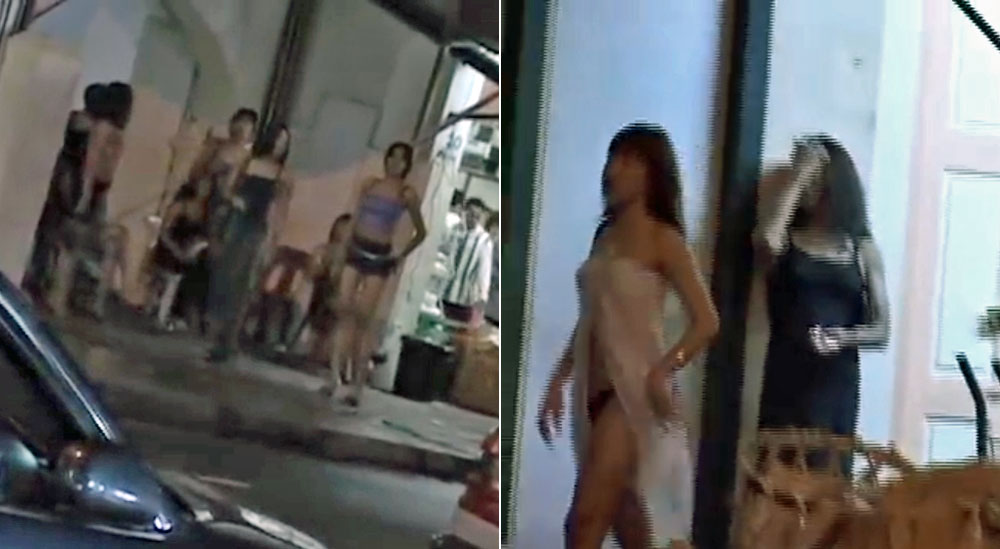A seedy part of Singapore was thrown into the spotlight recently.
This was after videos emerged on Facebook showing the Singapore police conducting raids on illegal brothels in Rowell Road, located in the Jalan Besar district where popular supper place Swee Choon Tim Sum is also located at.
Together with Desker Road beside it, these two lanes are infamous for being part of Singapore's red-light districts -- the others being Geylang and Changi Village.
And the main reason for the perceived pronounced deviance is due to the brothels in Desker Road and Rowell Road housing transgender prostitutes.
How did they come to be?
However, to understand how and why transgender prostitutes end up in Desker Road and Rowell Road is not easy.
Attempts to trace the beginnings of the sex trade in this particular district based on publicly-available information online has proved futile.
Other than the fact that Desker and Rowell were real people, the oft-repeated fact is simply that the Desker Road area used to house Singapore's first and largest slaughter house and butchery in the 1860s.
This, naturally, explains nothing -- although it is literally a meat trade in the purest form.
But by piecing together various sources of information, it is possible to conclude that Desker Road and Rowell Road came to be ground zero for brothels with transgender prostitutes, as a result of the crisscrossing of historical, geographical and socio-economic conditions.
Let's start with the history.
History: The Bugis connection
Located a short distance away from Jalan Besar area is Bugis Street, a former haven for transsexuals during the 1950s to 1980s.
Its heyday was before and some time in the 1970s.
The Vietnam War was raging and soldiers on leave from active duty would make their way south to Singapore to explore the fascinating oriental gender-bending antics of transsexuals and transvestites.
And when there are Americans, you will also find the British.
There were all forms of debauchery carried out very publicly, at a time when Singapore was very happening and the police still wore shorts.
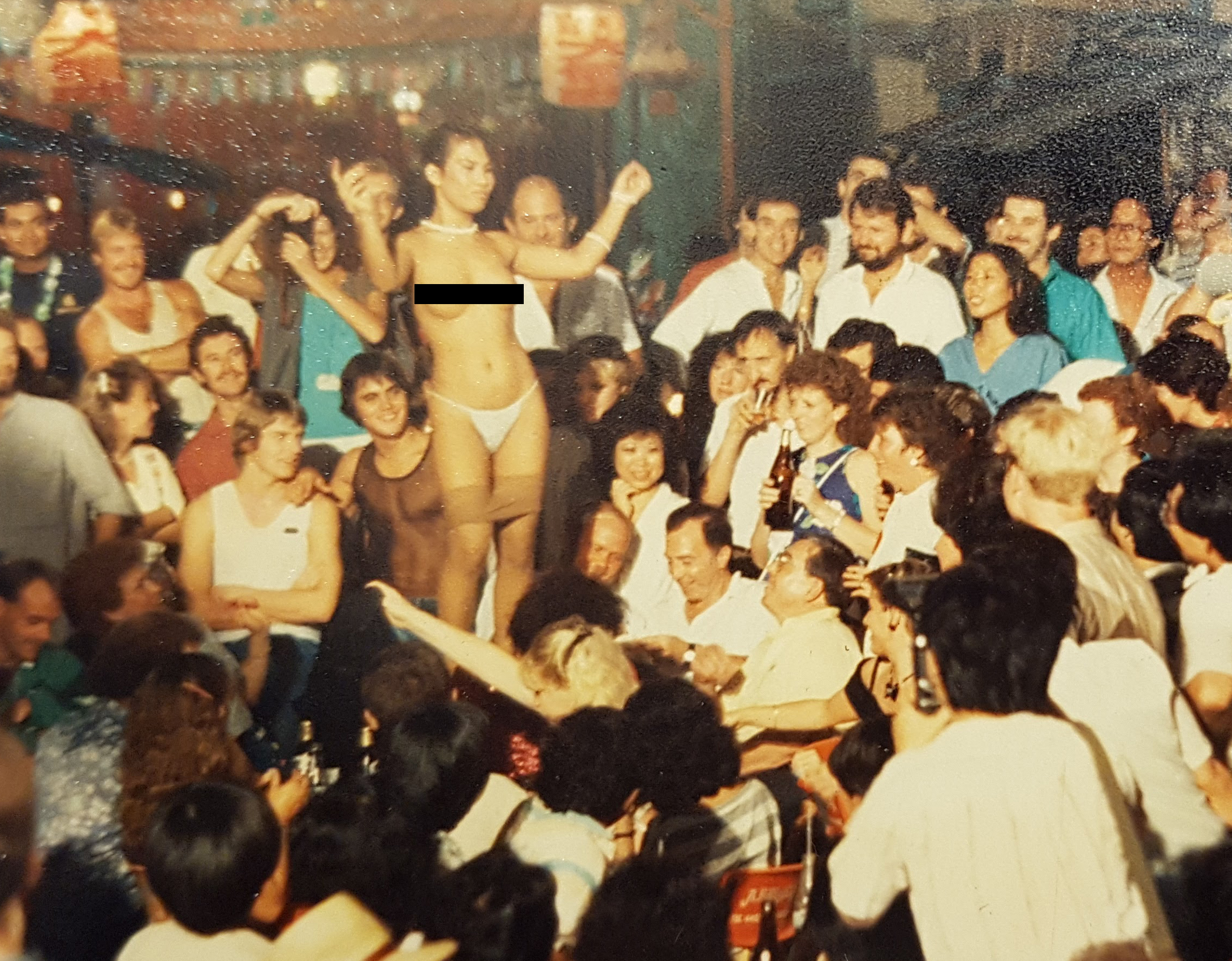 A transvestite performing a striptease in public along Bugis Street. Image courtesy of Peter Lee.
A transvestite performing a striptease in public along Bugis Street. Image courtesy of Peter Lee.
A digression: For the sake of convenience, transsexuals and transvestites will be collectively referred to as "transgender".
But the distinction is as follows:
• Transsexuals are born with the physical characteristics of one gender but who feel they belong to the opposite sex.
• Transvestites are people, typically a man, who derives pleasure from dressing in women's clothes.
Bugis Street was even called “Boogie Street”, which was a mispronunciation of the name that stuck in 1970s with the rise of disco.
And then in the 1970s, the government in Singapore had enough and began cracking down on the area.
By the 1980s, the crackdown grew more harsh.
In December 1980, this was what a French photographer, Alain Soldeville, saw in Bugis Street:
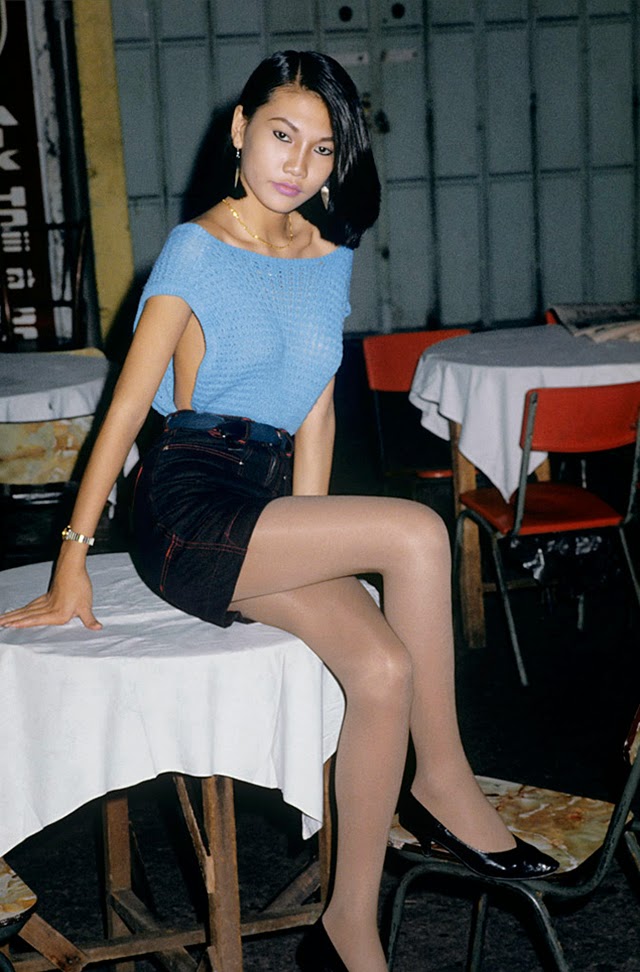
By 1984, all deviant and inappropriate activities were more or less phased out.
The old Bugis Street was demolished in the mid-1980s.
An MRT station began its construction and fast forward a few more years, built upon its ruins are shopping malls, restaurants and entertainment outlets.
The spread of vice
So, when there's vice, it will always attract more vice.
Running parallel to Queen Street and Victoria Street in the Bugis area was a certain Johore Road.
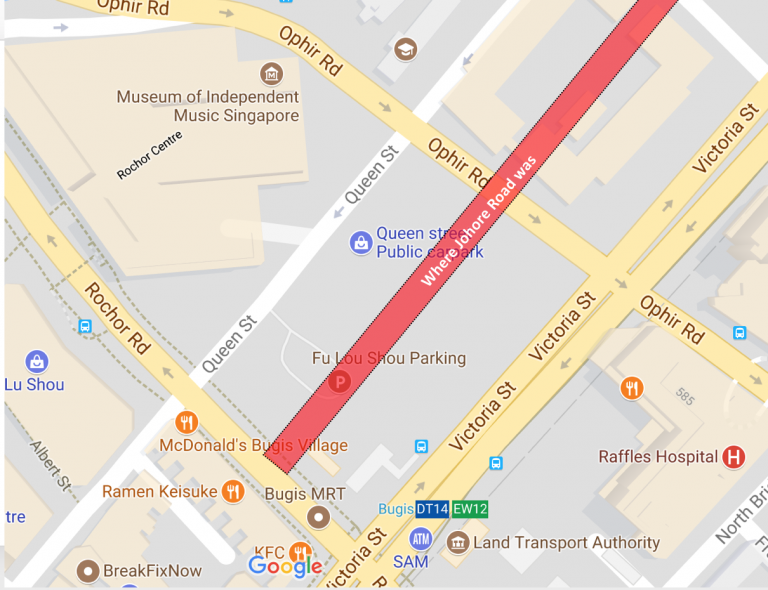
In its heyday in the 1960s and the 1970s, it was a notorious red-light district with transgender prostitutes soliciting for business in the shophouses and alleys.
It was just a stone’s throw away from the famous cabaret performances and transgender prostitutes at Bugis Street.
And it is definitely not a coincidence that Johore Road is in the direction of Jalan Besar.
As efforts to clean up the Bugis area were underway, it inadvertently dispersed the activities further out to other surrounding areas.
Moreover, Johore Road was expunged from the maps in the late 1990s.
This meant that the entire road was erased from existence.
After a brief occupancy of Victoria Street Wholesale Centre, Johore Road today is nothing but a green field.
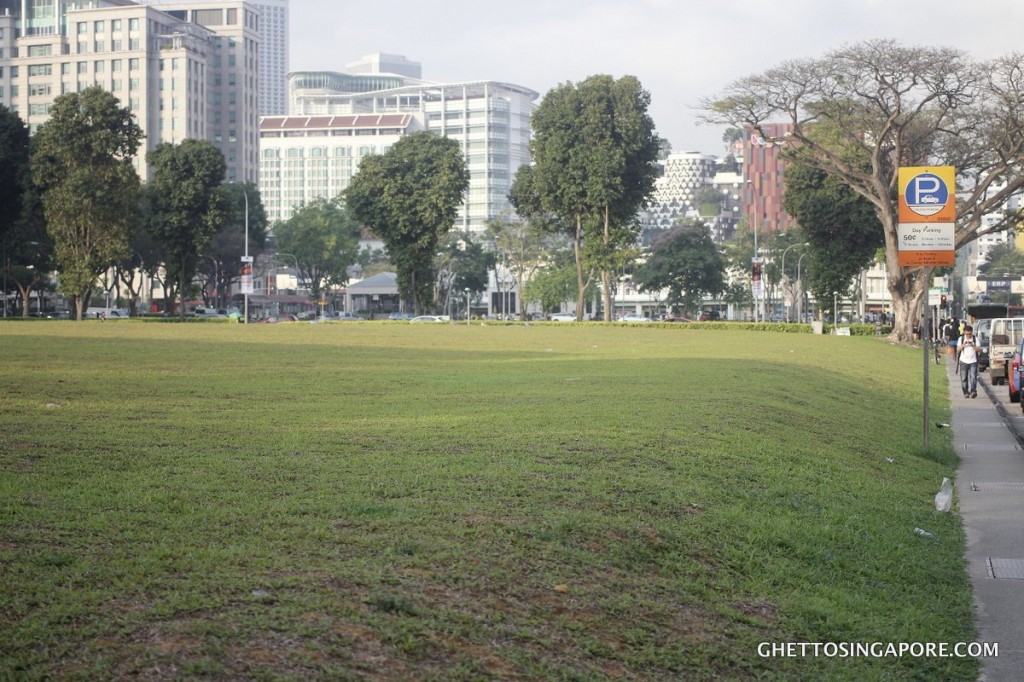
Geography: Proximity to foreign workers
Even though the Singapore authorities managed to physically remove a place by literally making it disappear, it is impossible to make the people who used to congregate at that place disappear as well.
As transsexuals and transvestites could no longer gather at the old Bugis Street, which is where Bugis+ is now, they got pushed to the fringe.
And the Jalan Besar area is that fringe that happens to be the sweet spot -- owing to the area's proximity to hordes of men, in particular, foreign workers, and its highly accessible location and unique architectural features that abets the vice trade.
A background on transsexual and transvestite sexual services
In the world of transsexual and transgender sex services, there is apparently a pecking order.
Singaporeans are favoured over foreigners. However, in this day and age, the number of transgender locals in the flesh trade is very small.
But at the top are those who work in Orchard Towers as they command the best rates.
As a reference: Ten years ago, the seniors can charge S$250 to S$300 for an hour’s service. And the longer you work, the more senior you are.
Geylang is ranked second because those working there earned S$50 to S$80 an hour.
Those working at Changi Point are paid S$30 to S$50 an hour.
Those at Desker Road get S$20 to S$50.
Socio-economic conditions of foreign workers
And this is where socio-economic conditions and life collide.
As vice attracts vice, men will naturally also attract vice.
Transgender prostitutes in Desker Road and Rowell Road over the past decade or more have been catering to a very specific clientele.
This is partly due to the affordability of their services, and the fact that the foreign worker clientele typically congregates weekly at the Farrer Park and Little India area, which is a short five-minute walking distance away.
And this is where things get even more interesting.
Not only is Desker Road and Rowell Road conveniently located, the architecture of the shophouses boxes in the vice activities strategically by keeping a peering public at bay, while maintaining a facade of normalcy, but still giving those willing to pay to play full pickings.
These conserved terrace shophouses lined up against each other create an alley by chance, which interestingly, also makes policing easier along the entire stretch:
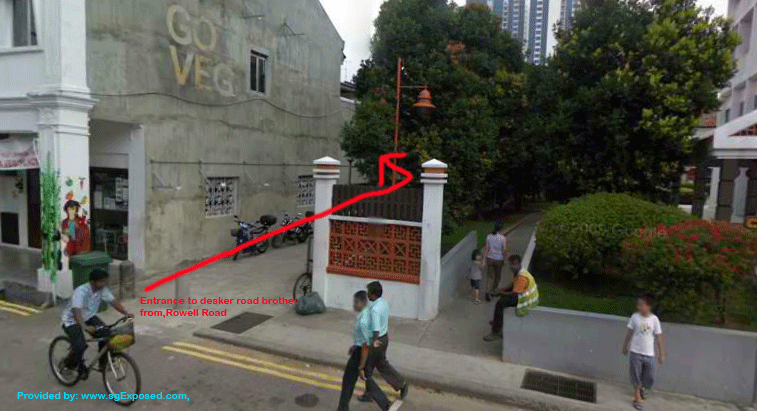 Photo via
Photo via
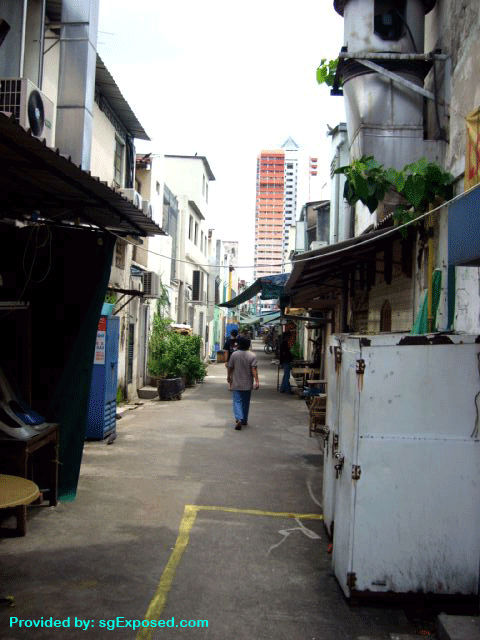 Photo via
Photo via
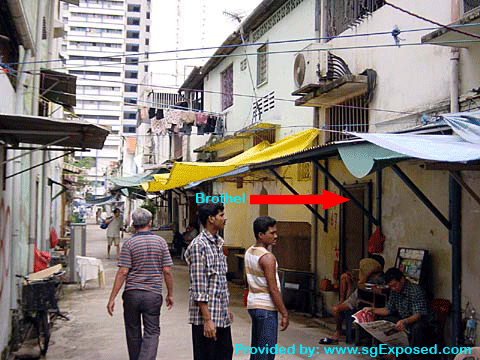 Photo via
Photo via
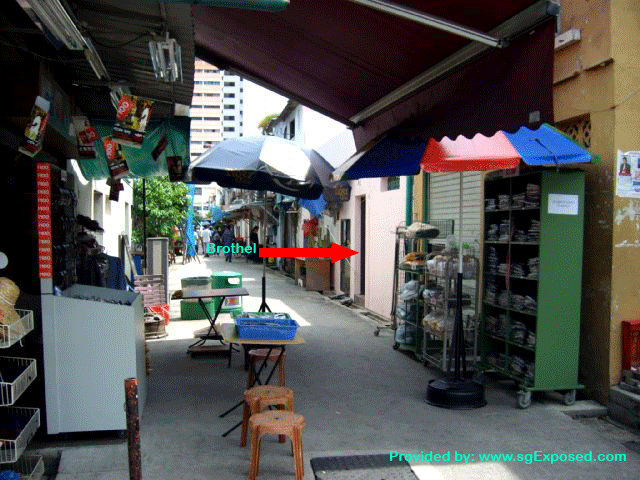 Photo via
Photo via
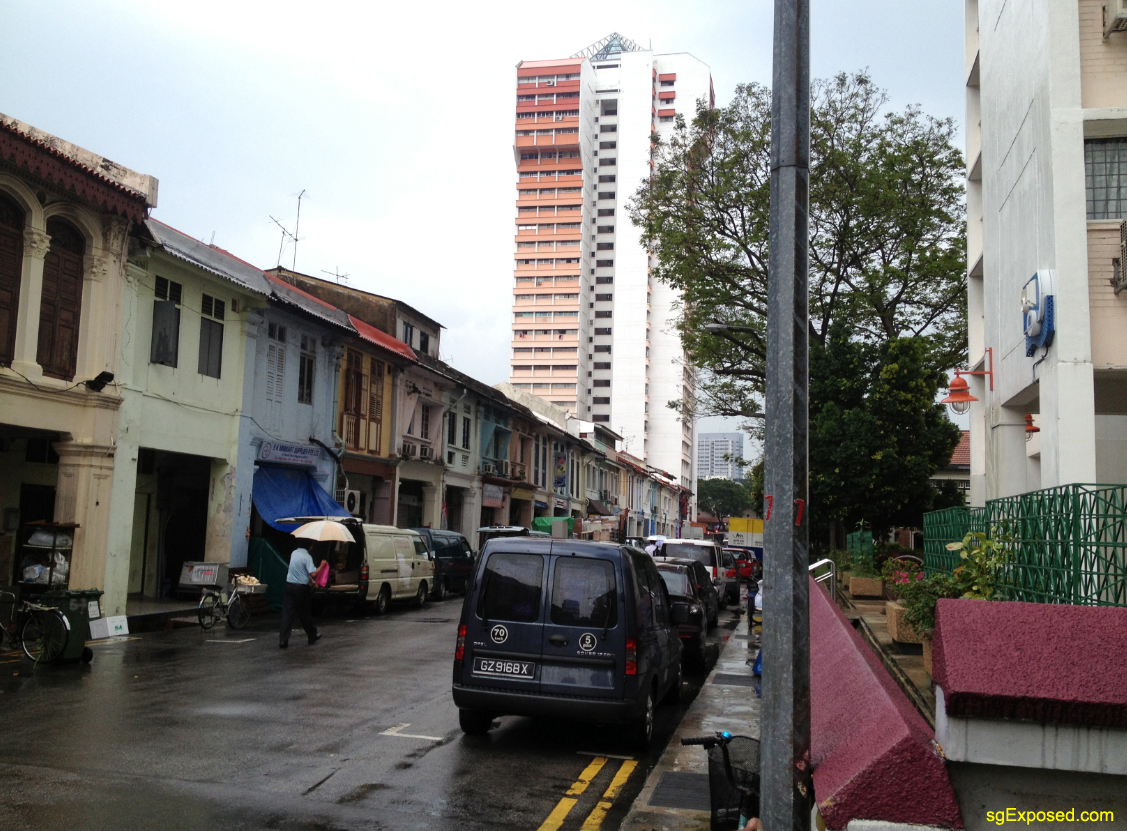 Photo via
Photo via
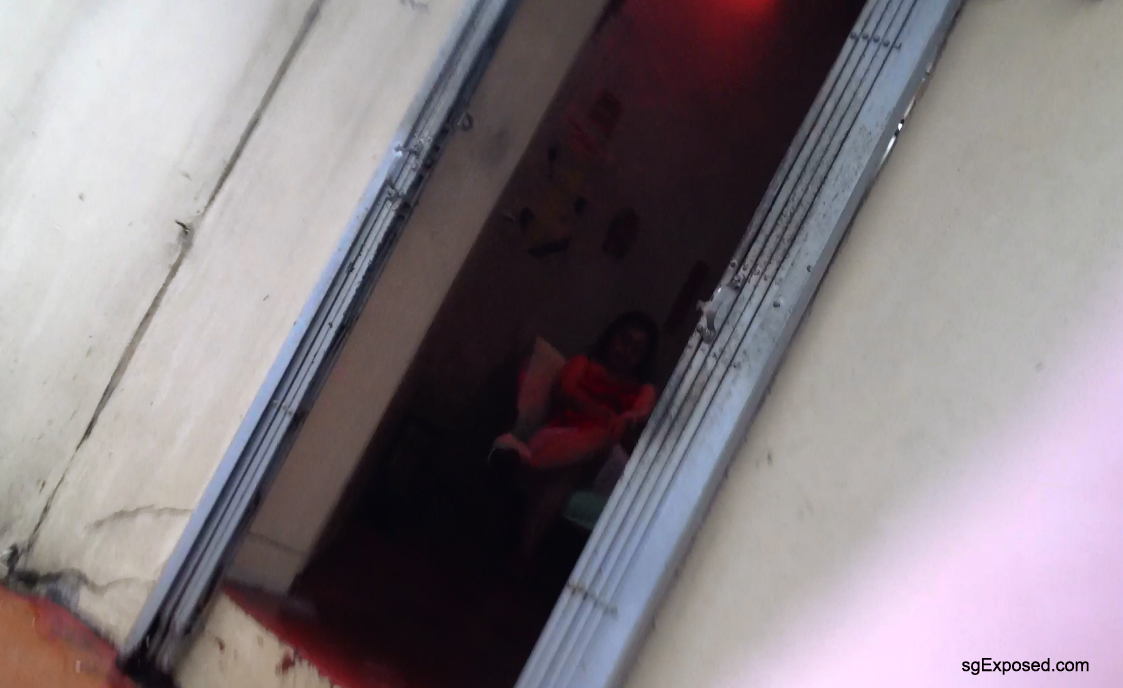 Photo via
Photo via
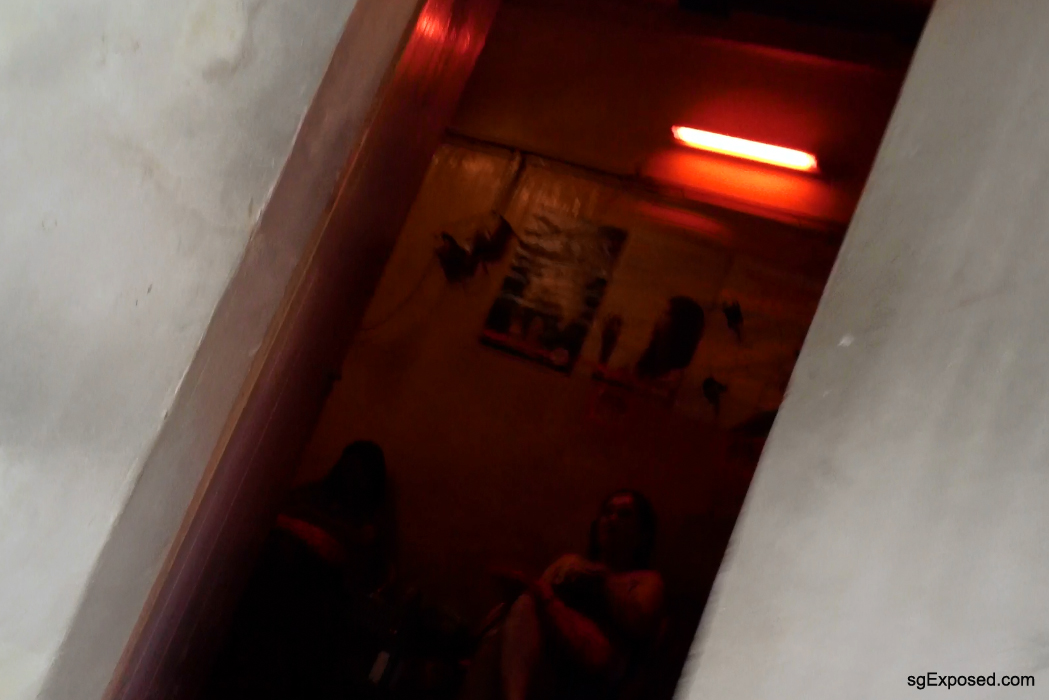 Photo via
Photo via
For the uninitiated, prostitution is legal in Singapore, but solicitation isn't.
The alleys apparently then allowed the practice of enabling the prostitutes to remain indoors without actively breaking the solicitation law, and the informal rule was for them to close the doors if the police or informants were in the vicinity.
It's all very cat-and-mouse.
Outlawing of vice
However, it is clear that Desker Road and Rowell Road is not the same as before.
Below are two videos from 2007, 10 years ago, which show exactly how blatant and daring the solicitation for customers were previously at its peak compared to these days, where you will rarely see any streetwalkers out and about:
Final frontier
Desker Road and Rowell Road are quite possibly the final frontier for transgender prostitutes in that district.
From a policy perspective, the complete eradication of an activity such as prostitution will only push the trade further underground and possibly lead to other unintended consequences.
Singapore has always maintained a highly-calibrated approach to the highly-commodified sex trade here.
Receiving public feedback and acting on it is one thing.
The authorities having to decide on and deal with the eventual trade-offs is another -- especially when the issue will most likely threaten to come back full circle as another type of law and order problem.
If you like what you read, follow us on Facebook, Instagram, Twitter and Telegram to get the latest updates.
